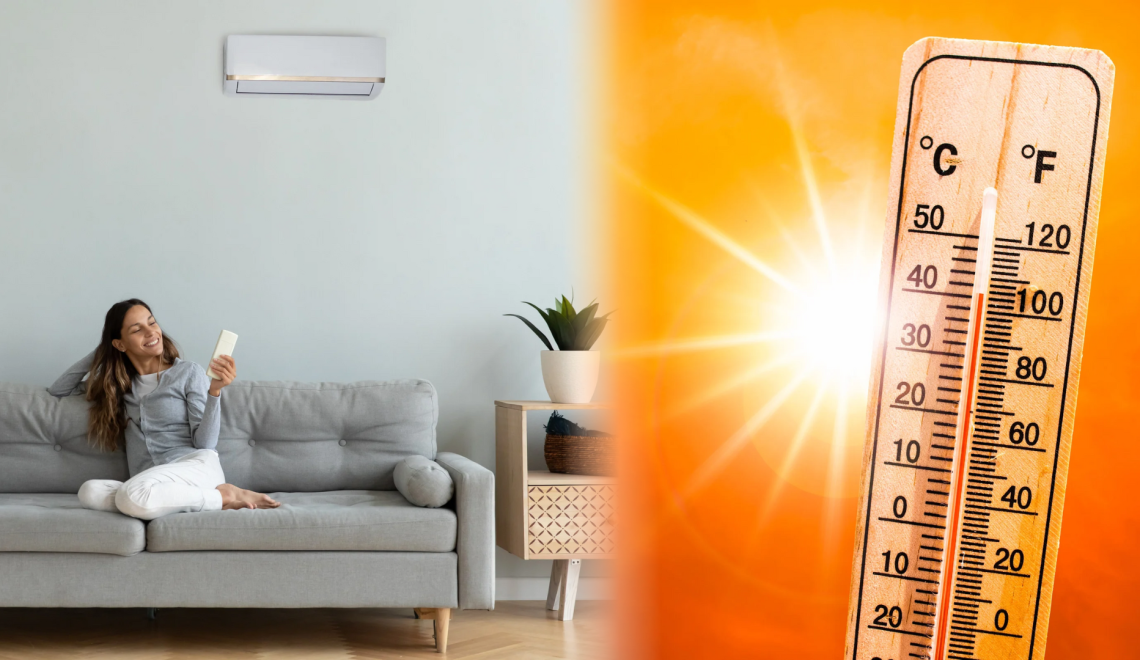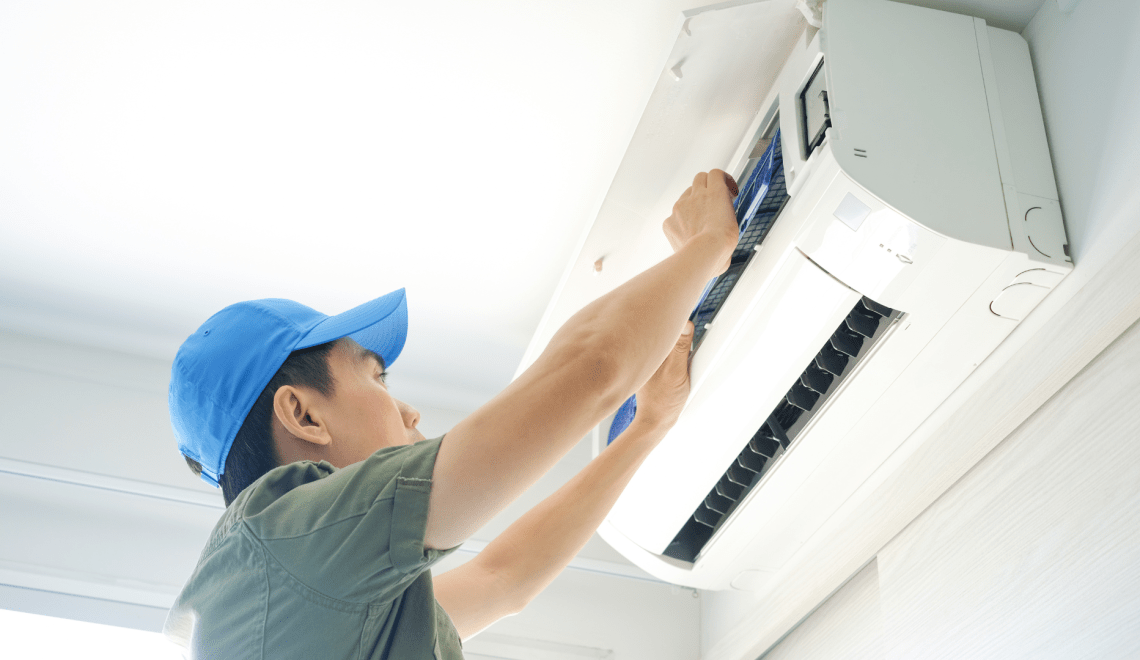
Australia’s summer heat can be relentless, making it essential to find effective ways to stay cool at home. With temperatures soaring, excessive reliance on air conditioning can lead to high energy bills and environmental impact. Fortunately, a combination of simple adjustments and smart cooling strategies can help maintain comfort while reducing the need for artificial cooling.
From optimising airflow to shading your home effectively, small changes can make a big difference. Whether you’re looking to lower indoor temperatures, improve ventilation, or stay comfortable without overusing air conditioning, these ten practical tips written with consultation from the experts at Metropolitan Air Conditioning will help you beat the heat and enjoy a cooler, more refreshing summer.
Tip 1: Optimise Your Ceiling Fan Usage
Ceiling fans are an energy-efficient way to keep your home cool, but they need to be used correctly for maximum effectiveness. In summer, set your fans to rotate counterclockwise to create a cooling breeze that helps evaporate moisture from your skin, making you feel cooler without lowering the room temperature. Adjusting the fan speed based on room size and usage can also enhance comfort.
To save energy, turn off ceiling fans when leaving a room, as they cool people, not spaces. Pairing fans with open windows or air conditioning can further improve air circulation and cooling efficiency.
Tip 2: Use Curtains and Blinds
Keeping your home cool starts with blocking out direct sunlight. Closing curtains and blinds during the hottest parts of the day prevents heat from entering through windows, helping to maintain a lower indoor temperature. Light-coloured or reflective window coverings are particularly effective at deflecting sunlight, while insulated curtains reduce heat transfer, making rooms feel cooler.
To maximise airflow and cooling:
- Open blinds and windows in the early morning and evening to let in fresh air.
- Use sheer curtains for privacy while still allowing natural light and ventilation.
- Combine window coverings with outdoor shading for even better heat protection.
Tip 3: Create Cross-Breezes
Encouraging natural airflow through your home can significantly improve indoor comfort. Open windows on opposite sides of the house to create a cross-breeze, allowing fresh air to flow through and push out trapped heat. Positioning doors and vents strategically can enhance this effect, especially in the cooler morning and evening hours.
For better circulation, use fans to direct airflow between rooms. Placing a fan near an open window can help pull in cooler air while another fan facing outward can expel warm air, creating a refreshing and continuous cooling effect throughout your home.
Tip 4: Reduce Indoor Heat Sources
Minimise Heat from Cooking
Kitchen appliances like ovens and stoves can generate a significant amount of heat, making your home feel warmer. Try preparing meals that don’t require cooking, such as salads or cold dishes, or opt for outdoor grilling to keep excess heat outside. Slow cookers and microwaves are also great alternatives that produce less heat compared to traditional stovetops.
Reduce Appliance and Lighting Heat
Electronics and lighting contribute to indoor heat, especially in smaller spaces. Switch off unused devices like televisions and computers to minimise unnecessary warmth. Replace incandescent bulbs with energy-efficient LEDs, which emit far less heat. Limiting the use of heat-producing appliances, such as hairdryers and dishwashers, during the hottest parts of the day can also help keep your home cooler.
Tip 5: Maximise Outdoor Shade
Shading your home’s exterior is one of the most effective ways to reduce indoor heat. Awnings, pergolas, and external blinds can block direct sunlight before it reaches windows and walls, significantly lowering indoor temperatures. Planting shade trees or tall shrubs near windows can also provide natural cooling, especially in areas exposed to harsh afternoon sun.
Outdoor spaces benefit too—creating shaded areas with umbrellas or pergolas makes patios and gardens more comfortable. By keeping the sun off key areas, you can reduce the heat absorbed by your home and enjoy cooler living spaces throughout summer.
Tip 6: Hydration and Cooling Habits
Staying hydrated is essential during hot summer days. Drink plenty of water throughout the day to regulate body temperature and prevent dehydration. Keeping a reusable bottle filled with chilled water nearby serves as a helpful reminder. Eating water-rich foods like cucumbers, melons, and oranges can also contribute to hydration while providing a refreshing boost.
Wearing light, breathable clothing made from natural fibres like cotton or linen helps keep you cool by allowing air to circulate. Scheduling physical activities and household chores for cooler morning or evening hours can also prevent overheating and discomfort.
Tip 7: Smart Use of Air Conditioning
Air conditioning can be a lifesaver during extreme heat, but using it efficiently is key to staying comfortable without high energy costs. Setting the thermostat to 24–26°C strikes a balance between cooling and efficiency. Keeping doors and windows closed in cooled rooms prevents unnecessary heat gain, reducing strain on the system.
For better performance and energy savings:
- Ceiling fans should be used alongside air conditioning to improve airflow.
- Clean air filters regularly to maintain efficiency.
- Schedule maintenance checks to ensure your unit runs optimally.
- Turn off air conditioning when leaving the house for extended periods.
Tip 8: Insulation and Sealing
Good insulation helps maintain a comfortable indoor temperature by slowing the transfer of heat. Properly insulated walls and ceilings keep hot air out during summer, reducing the need for excessive cooling. Double-glazed windows can also improve insulation by minimising heat gain through glass surfaces, helping to keep rooms naturally cooler.
Sealing gaps around doors and windows prevents warm air from entering and cool air from escaping. Installing weather stripping or using draft stoppers can make a noticeable difference in maintaining a comfortable temperature, improving energy efficiency, and reducing reliance on air conditioning.
Tip 9: Airflow in Bedrooms
Improve Night-time Ventilation
A well-ventilated bedroom is key to comfortable sleep during summer. Position your bed away from direct sunlight and ensure windows are open in the evening if outdoor temperatures drop. If security allows, keeping a window slightly ajar overnight can improve airflow and help prevent overheating.
Choose Breathable Bedding
Your choice of bedding can make a big difference in staying cool at night. Opt for lightweight, moisture-wicking materials like cotton or bamboo, which promote airflow and absorb sweat. Cooling pillows and breathable mattress toppers can also help regulate body temperature, creating a more comfortable sleeping environment.
Tip 10: Greenery for Cooler Surroundings
Strategically placed greenery can help lower temperatures around your home. Trees, shrubs, and vertical gardens provide natural insulation, reducing heat absorption and creating a more comfortable outdoor environment. Planting shade trees near windows can significantly cut down on indoor heat, making rooms feel cooler.
To enhance cooling with plants:
- Grow vines or install a vertical garden on sun-exposed walls.
- Place potted plants on balconies or patios to increase humidity and shade.
- Choose native, drought-resistant plants for a sustainable, low-maintenance solution.
- Position greenery near outdoor seating areas for a naturally cooler space.
Ensure Your Home Stays Cool All Year Long!
Staying cool during the Australian summer doesn’t have to mean relying solely on air conditioning. Simple adjustments, such as optimising ceiling fans, blocking direct sunlight, and encouraging natural airflow, can make a noticeable difference in maintaining a comfortable home. Reducing indoor heat sources, staying hydrated, and making smart use of cooling systems all contribute to a fresher living space.
By combining multiple strategies, you can keep your home cool while reducing energy costs and minimising environmental impact. Whether through improved insulation, shaded outdoor areas, or the addition of greenery, these small changes help create a more enjoyable and refreshing summer at home.











